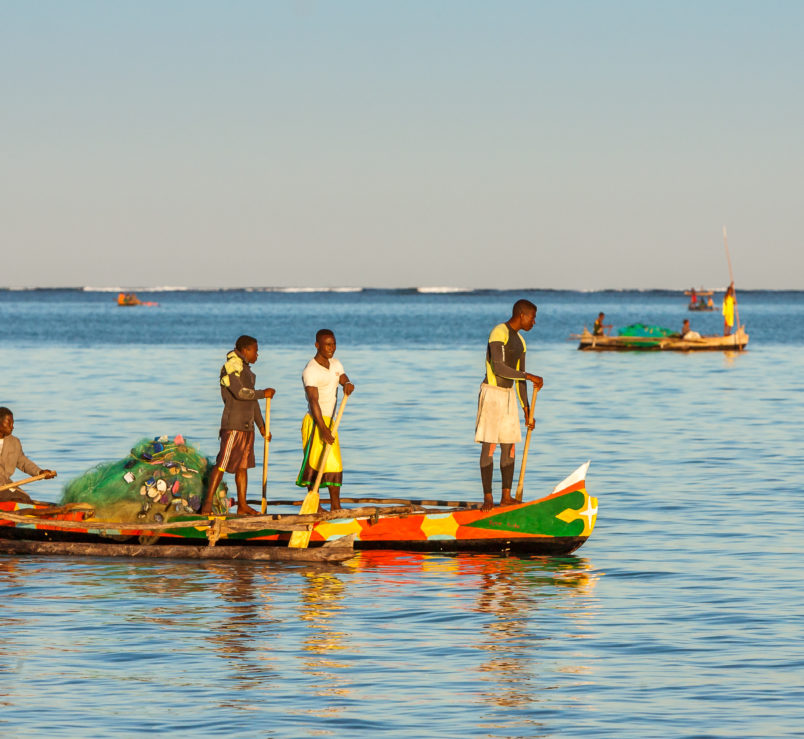The Twin Goals of Biodiversity Conservation and Poverty Reduction
While links between poverty reduction and biodiversity conservation objectives are complex, our evaluation of the Darwin Initiative, Darwin Plus and Illegal Wildlife Trade Challenge Fund found substantial evidence of impact for each of the funds, with evidence that these have successfully reduced key threats to biodiversity while demonstrating multidimensional improvements in wellbeing. However, there are also key lessons learnt to be taken forward.
Biodiversity plays a critical and complex role in the achievement of the United Nation’s Sustainable Development Goals. Biodiversity is intrinsically linked with goals related to poverty, hunger, education, health, gender equality, and overall wellbeing (IPBES, 2019). In the last 50 years, there has been a catastrophic and unprecedented decline of the earth’s biodiversity which continues to accelerate across the globe. Low-and middle-income countries are most vulnerable to the negative impacts of biodiversity loss. The trade of illegal wildlife also threatens some of the world’s most iconic species with extinction, and can exacerbate poverty and insecurity. Despite worldwide recognition of these challenges in the form of numerous international commitments, such as the Convention for Biological Diversity (CBD) or the London Conference on the Illegal Wildlife Trade (IWT), significant barriers still exist when addressing these issues.
How has the UK been addressing this challenge?
Funded by the Department for Environment, Food and Rural Affairs (Defra), the Darwin Initiative, Darwin Plus and Illegal Wildlife Trade Challenge Fund as a portfolio of programmes aim to halt or reverse biodiversity loss, tackle IWT, and reduce poverty in line with global agreements.
In September 2020, Defra commissioned Ecorys to undertake a theory-based, mixed methods evaluation of the three funds. The scope of this evaluation included all projects, with deep dive assessments in Bolivia, Kenya, Indonesia, Nepal, Vietnam and the British Virgin Islands. Our evaluation had four key objectives, including to:
- Assess the impact of the funds;
- Identify gaps in logic and draw out key lessons to understand how the funds could be improved;
- Facilitate clearer communication of the scheme’s key achievements;
- Provide insights and recommendations for establishing effective monitoring and evaluation (M&E) systems.
Our evaluation covered a broad and complex range of issues relevant to biodiversity conservation. Reflecting on International End Poverty Day, we have summarised some of the findings and lessons from our evaluation on the links between biodiversity conservation and poverty reduction.
Key findings
Our evaluation found that funded projects were strongly aligned with addressing relevant threats to biodiversity, including the illegal and unsustainable killing or harvest of nature, habitat degradation and habitat loss. Projects also strongly aligned with the needs of host countries and communities in which they operated.
There is a growing body of literature examining the relationships between biodiversity and poverty, and the achievement of win-win solutions. However, we found that the links between poverty reduction, climate and biodiversity conservation objectives are complex and there is disagreement about how best to address these in the context of multiple global challenges and crises.
We found substantial evidence of impact for each of the funds. They have successfully reduced key threats to biodiversity and directly contributed to the enhanced conservation status of species in some cases, while demonstrating multidimensional improvements in wellbeing.
For example, the Darwin Initiative made significant contributions to reducing threats to biodiversity loss as a result of developing effective conservation support mechanisms, impactful knowledge products, conservation-oriented behaviours among local people and government, and multi-level, multi-actor engagement. These have built capacity and promoted the sustainable use, management, conservation and recovery of key species and habitats. Effective participation of indigenous people and local communities also helped to support multidimensional improvements in wellbeing, including income, employment, health and food security, and greater social capital and empowerment.
The inclusion of women, indigenous people and other marginalised groups are integral to both biodiversity conservation and poverty reduction given their critical roles in the management and use of natural resources, but undermined by inequalities embedded in policy and social norms. We developed a bespoke Gender, Equity and Social Inclusion (GESI) framework which helped us assess the degree to which funds are sensitive to GESI issues. We observed a notable increase in the degree to which projects mainstreamed these considerations over time. While funded projects demonstrate appropriate GESI thinking and principles, identify key stakeholders, and have gender balanced teams; challenges remain in meaningfully integrating GESI into project design and implementation. This includes potential trade-offs, more effective engagement with marginalised groups, integrating specific gender and social inclusion expertise, and tailoring ethical protocols to local contexts.
Measuring poverty reduction benefits, which are often long-term, can be difficult in the 3-year average timeframe of funded projects. It can also be challenging given the relatively uncertain nature of outcomes related to poverty reduction, which can be dependent on biophysical conditions and the access and stability of markets.
Lessons learnt
While there is a complex relationship between poverty and biodiversity, our evaluation provided supporting evidence to a central assumption of the funds; that poverty reduction and biodiversity benefits are achievable and compatible. However, there are a number of lessons learnt:
- Considerate timing and sequencing of livelihood activities, in-country presence and demonstrating “early wins” even if small help to build trust and enable implementation.
- Livelihood activities should be tailored to the local context, needs and preferences of local communities, and be proactive in questioning assumptions and trade-offs as the context changes.
- Projects must ensure livelihood activities can be sustained, for example through developing community-based organisations, using market systems approaches, or other arrangements to make activities self-sustainable.
- Projects must continue to reflect on poverty reduction ambitions, as outcomes are often specified which take longer to materialise than anticipated.
- Clearly outlining, monitoring and reviewing the assumptions behind intended biodiversity-poverty pathways is important as this can help to identify small actions to increase the chances that change will happen or be sustained.
Our reports produced by the evaluation have been published on the funds’ websites, including our Inception Report, Final Report, and Monitoring, Evaluation and Learning Insights and Recommendations.
For more information about this evaluation please contact Liam Shah.

17 October 2022
5 minute read
Sectors
Key Experts
Liam Shah
Research Manager



